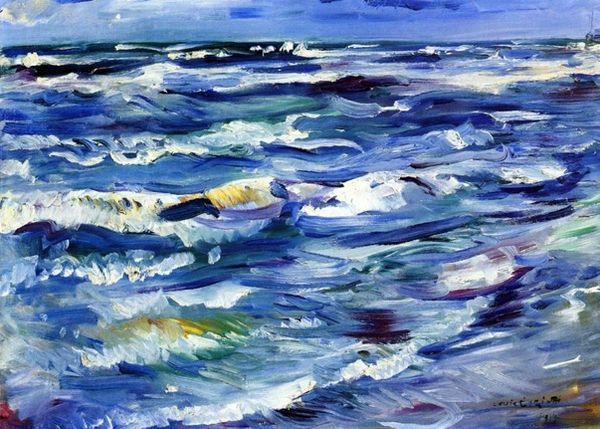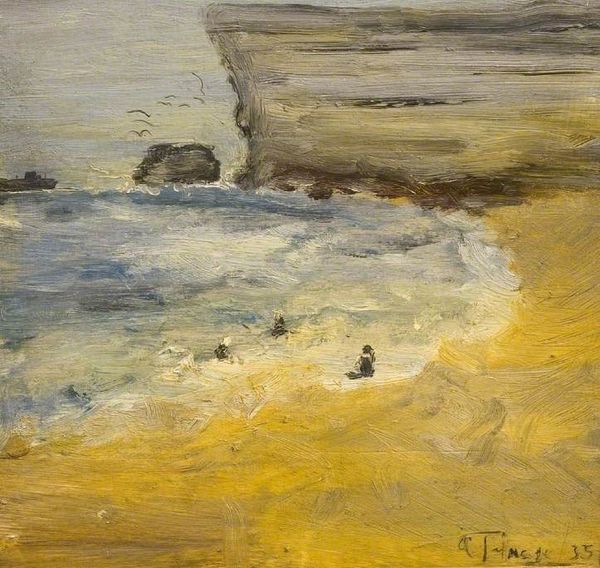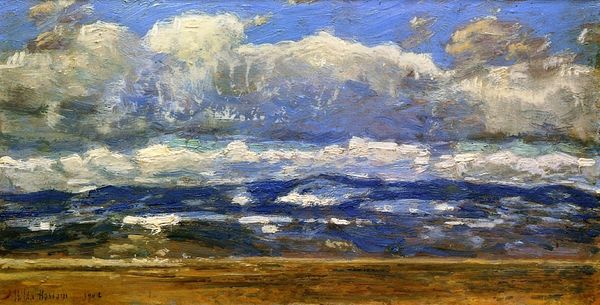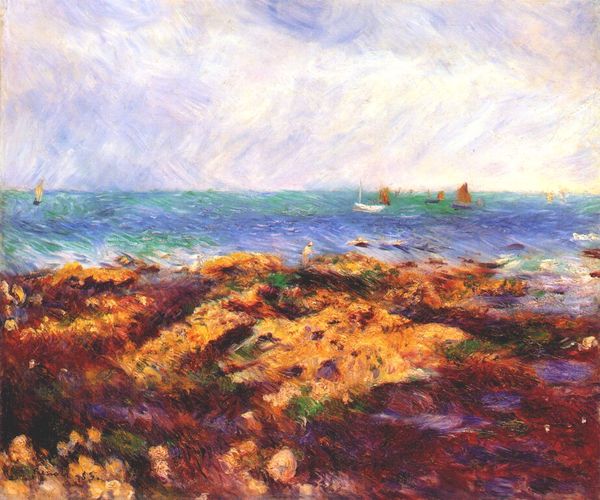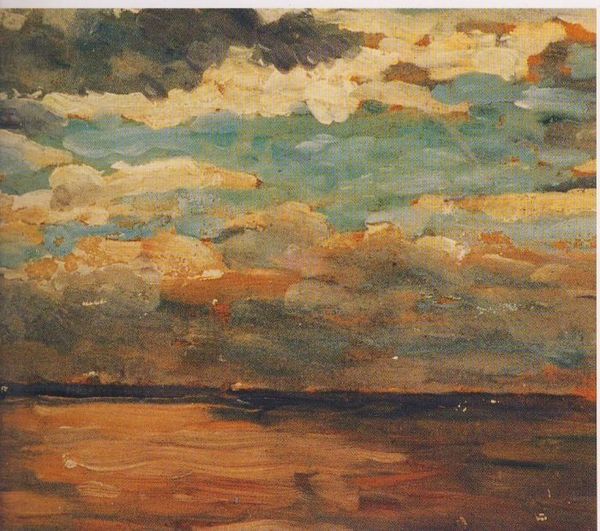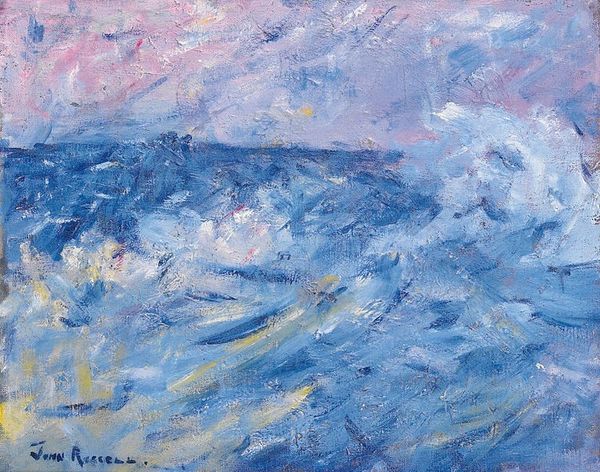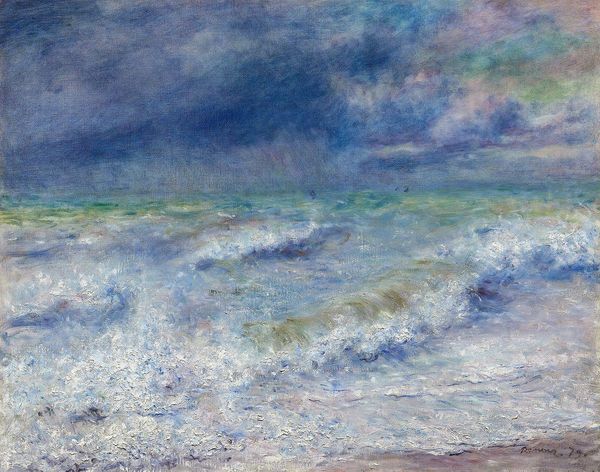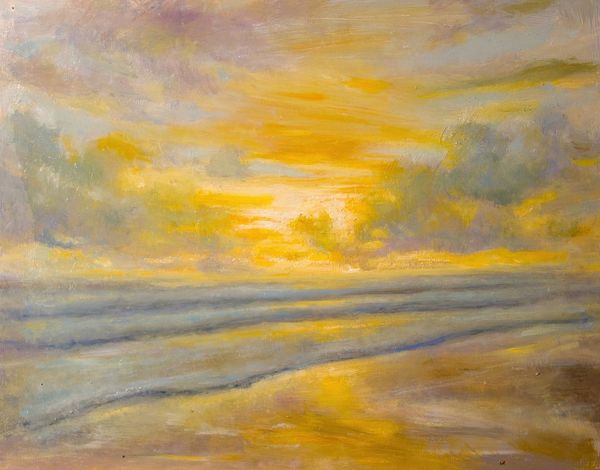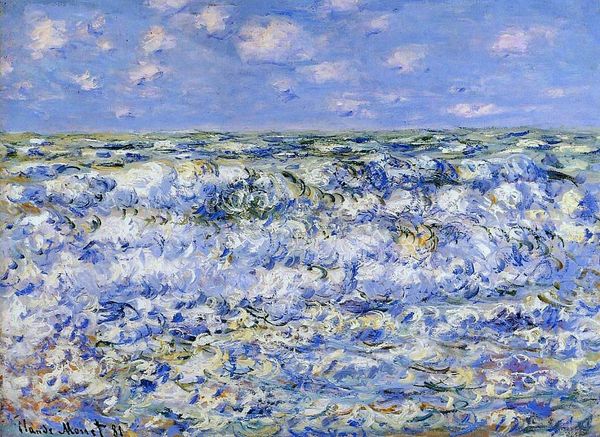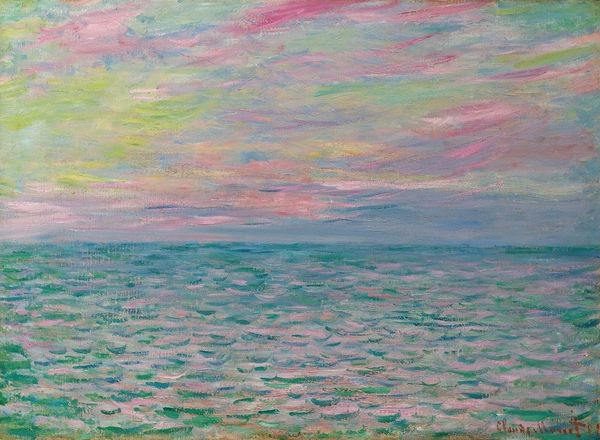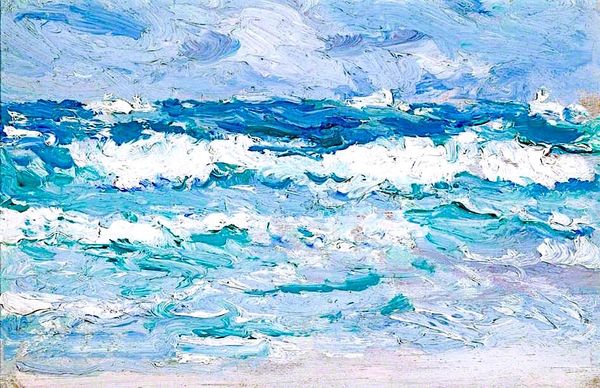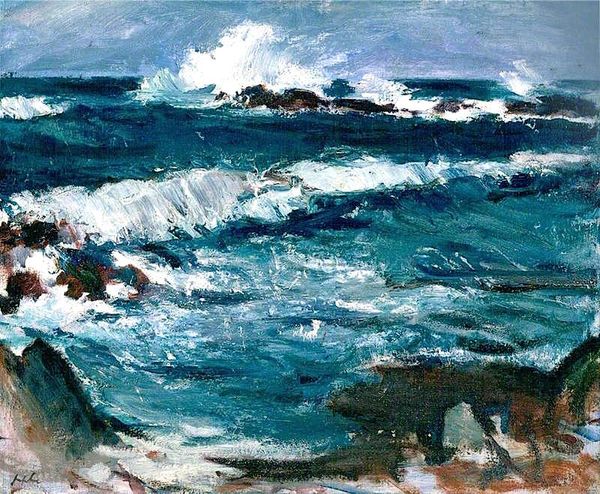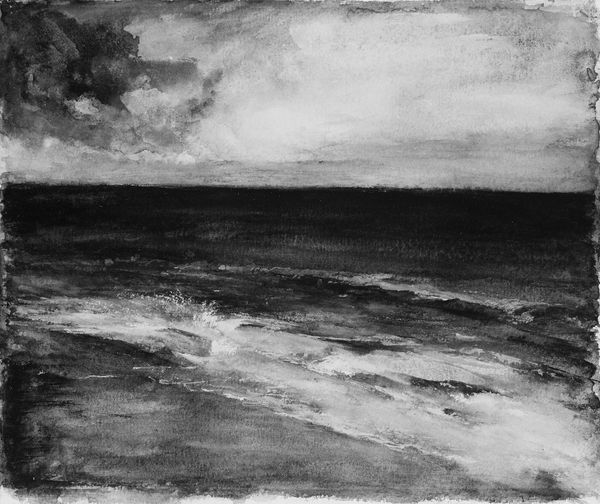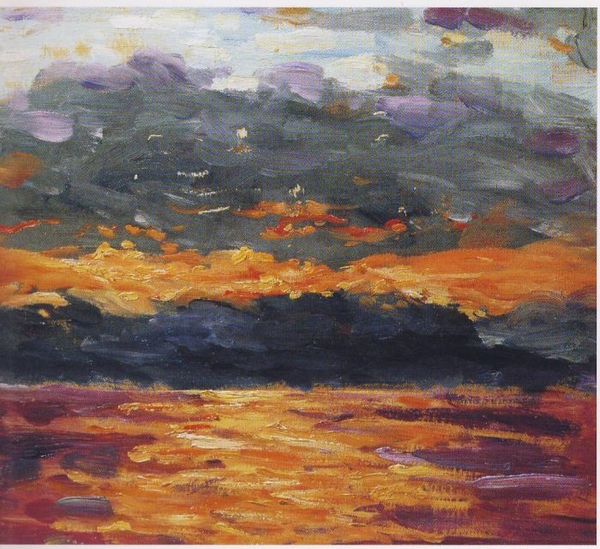
Copyright: Public domain
Editor: This is Renoir's "Seascape near Berneval," painted in 1879. It's oil on canvas. I'm struck by how the choppy water seems to vibrate with light and movement. The colors are unexpected – mostly yellows and blues – and it creates a strangely restless atmosphere. What are your initial observations of the formal elements at play here? Curator: A compelling selection! Let us examine the interplay of color. Note the restricted palette and how the artist utilizes a limited range of hues to create depth and movement. Consider the application of paint – the loose brushstrokes. What does the artist gain by foregoing precise representation in favour of a more suggestive, textural approach? Editor: I suppose it makes the scene feel more immediate and dynamic. It’s less about depicting the literal appearance of water and more about capturing a fleeting moment, an impression. But how do we move beyond impression and fleeting moments and create lasting value or a claim to high art status? Curator: Precisely! Renoir focuses on visual sensation. The visible brushstrokes disrupt a seamless surface, thereby drawing our attention to the act of painting itself. The composition is bisected by a nearly even horizon line, dividing sea and sky; we may look at the arrangement of the colours on either side. Consider the significance of these formal choices in establishing the painting’s pictorial structure. Editor: So, it's not just *what* is painted, but *how* it's painted, that conveys meaning. I never considered the near-even division of sea and sky as something meaningful. The brushwork, though, feels like its own language. Curator: Indeed. The formal elements articulate the image and suggest a deeper aesthetic investigation. Editor: That's really changed how I see Renoir’s choices! Thanks!
Comments
No comments
Be the first to comment and join the conversation on the ultimate creative platform.
